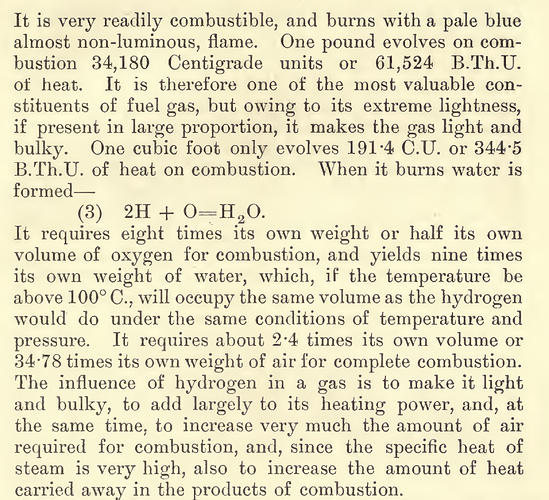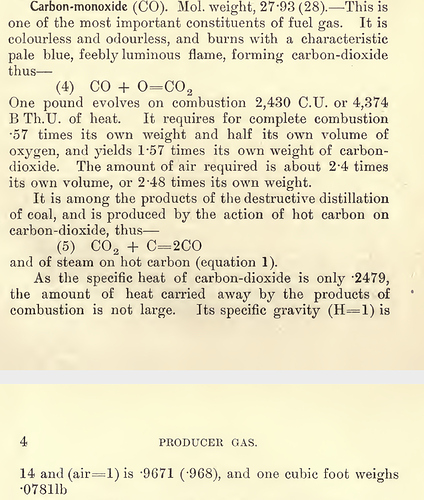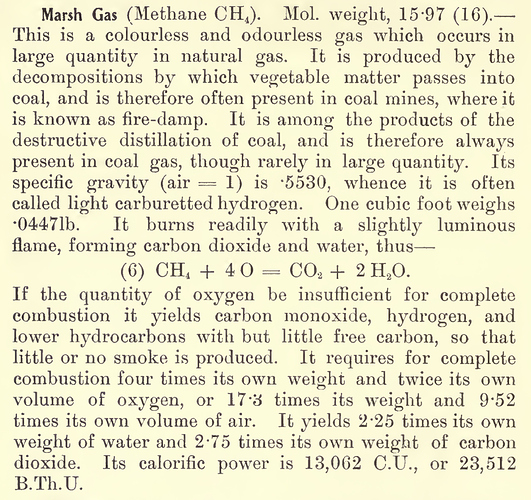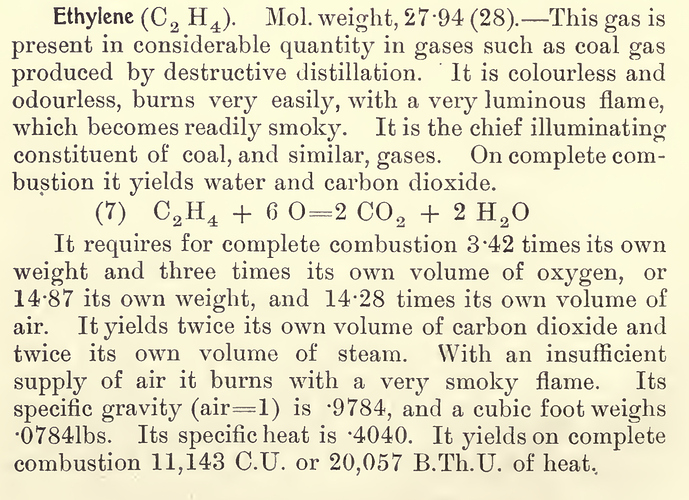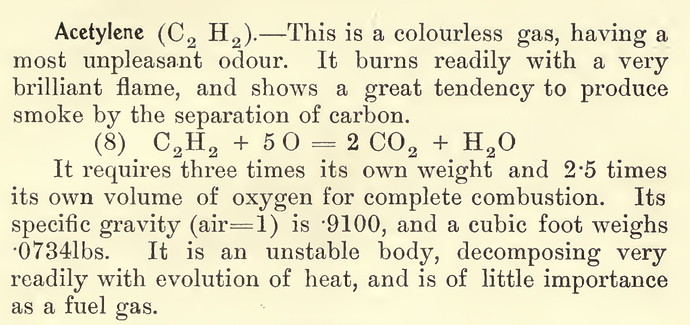I took some snapshots from old lecture:
They give some indication on gas flame color.
My personal experience is quite similar.
But also, if some pollution is present, color changes…
Oops, i have a color refractometer as well… 
What kind of filter does Vesa use?
yes absolutely, soots and tars will also change the color to orange and yellow. However, they are generally not as transparent with different flare characteristics. Also if you are not seeing the mist from hydrogen combustion then you are not seeing hydrogen. When Hydrogen is oxidized it is reforming back into water.
So recapping on this; this was more to learn about combustion of Hydrogen. I thought the explanation he gave here was very informative.
Ok so we have an article that states H is pale blue when oxidized. Your are creating H2 and H2s and neither form of production is it pure, there are still other things attached. My point is just because your flare has orange in it does not mean its dirty or full of tar. You do not need a perfect blue flare to show engine grade gas.
So some how the dirty internals of a gasifier is going to produce clean blue H2 flare and an electrolysis machine using 316L stainless steel with KoH and distilled uncontaminated water that was put together after sterilizing and wearing rubber gloves can not?? I think more investigation needs to done here.
If youve used an acetylene torch, youve seen how it is in an open flare with out oxygen, its orange and very dirty. Then you turn up the O to it and it will change its color, keeping adding and the orange goes completely away. You can do this same thing with H2 and producer gas. If you have never played with a speed control on your blower, this maybe of interest. I do have a very powerful blower now and I also have a speed control, I will do video to demonstration flare color changes at varying flow velocities and volumes. The flare will change as flows are changed. I can make just about any gasifier produce a blue flare using this.
I think he uses socks of some kind of high temp fabric, similar to @Patrick1’s setup. I bet @gasman knows.
Silica fabric can handle up to 1800*f
Edit I just ordered some, since the new power units have the exhaust system removed from the fourth tower, I had planned to use this as additional filtering. I ordered a 36 x 36 in sheet. This fabric is very tough stuff!!
Nice, thanks for sharing @Matt
On that subject, I found some surplus Nomex Aramid filter socks (8" diameter, 8ft long) being sold for almost nothing…so I grabbed them thinking it would be nice for experimenting/cutting up into smaller lengths. The material is very stout, felted, very breathable, and rated to 600F/315C, so definitely usable after a cyclone or anything that drops the gas stream temp a bit. Verdict: TBD. If anyone wants one…send me a direct msg.
these 2 small words from Matt “I can” and combine them with “coz I DO”.
Matt, amongst many out there, you’r a person DOING things, therefore you can and accomplish a lot of things. I envy thy spirits and skills…
On the other end of the scale, you’ll find persons as myself, doing less, talking more…
Benefitting from tech knowhow, tools at my disposal to measure things and to question outcomes…
I am learning, endlessly, even during writing words in this, for me, foreign language, hoping that i am doing this right, hoping that i am choosing the right words to encourage others to do their own thing… to see and experience things themselves, to have them succeed where i might fail…
Its not about blindly believing if its true or not, the doing it yourself will teach ya how easy or how difficult it was to achieve things done by others…
back on track: gasses are fun to play with, to learn from.
Most important: how to avoid content that could harm your engine, how to preserve content that benefits the performance of your system… each person is entitled to his own opinion on what they consider being the best… solution, way to do, filter type, flame color…
And factual, i could not agree more with any finding or observation made by others, but …
It does not oblige me to do the same…
I challenge my self to DO and THINK different, study old books and put things to the test…
Most of the time, if i express my self in an opposing way, it indicates that my personal findings or knowhow is different than being expressed by others… not meaning that others are wrong, just teasing to think more , or re think, about the subject in question…
Matt, regrading putting gas in garbage bags, there is a potential problem. When you separate the sides of the bag to inflate it, it can make staic electricity sparks. Learned this from experience.
I bought plans from Eagle Research for building an HHO gas welder. I built it with an 11 gallon cell. It’s built in 12 in. thick wall grey PVC. 10 ft of pipe cost me $1,000. I had all the plates cut out and, I built the electrical part. It uses 240 VAC with huge caps and HUGE diodes. Not sure what the final voltage is. I have quite a bit of experience with explosives. I have never turned on the HHO cell. I don’t trust it . It has a bubbler and, everything else. The bubbler is 3/16 wall stainless. It has good instrumentation. I still don’t trust it.
This was 10 years ago I had did these experiments and about 5 years of blower stuff up. I took safety precautions, but if you ever do see me running, prolly a good idea to run too. lol
Thanks for the link Matt, how many degrees does the filter have to withstand directly after the gasifier do you think?
I do not find how tight the fabric is woven, how big openings are there?
Hydrogen and can spontainiously ignite in some circumstances and in large quantitys. Occasionaly there is some hydrogen produced in one of our neutralisation reacting tubs (100m3 big) at work and when that happen, lids fly trugh the roof. It ignites even thugh everything is metalic, grounded and cool.
About bags, thats a real bad idea (wich l allso did  ). A daughter of a friend carryed the bag of acetilene/ox. to her father when it blew in her arms. All clothes were torn from her and her torso was covered with tiny fractures on the skin, bleading everywhere. Luckly that is all that happened to a 12 yo girl…
). A daughter of a friend carryed the bag of acetilene/ox. to her father when it blew in her arms. All clothes were torn from her and her torso was covered with tiny fractures on the skin, bleading everywhere. Luckly that is all that happened to a 12 yo girl…
You will need a cooling stage and something to drop ash debris before entering this bag filter. So the gas will be plenty cool before reaching this bag filter. This is a weave type fabric but is permeable I ordered the thinner stuff this time and I have not seen what it looks like. Im only doing this as an experiment. If have to change it out its a no go; the marble bed filters I use are maintenance free other than changing out the water for the wash system. This has a high flow pump that floods the marble bed as the gas flows thru it.
Yeah you got to be careful. I used a 100 foot hose and filled the bags remotely. I had a splice in the line and simply would break the line and light remotely. This will take your hearing out and yes you would hear this miles away  In the night It reminded me of training exercises in the military with motor practice rounds going off. We had one land on the hood of our Humvee one time. The flash will temporarily blind you for a few minutes.
In the night It reminded me of training exercises in the military with motor practice rounds going off. We had one land on the hood of our Humvee one time. The flash will temporarily blind you for a few minutes.
I would launch plastic bottles 100 ft in the air with hydrogen over water. Fill the bottle with about a 1/3 water and fill with hydrogen on top of the water. Eventually the bottle would become brittle from the heat and explode.
For me the sun gets in the way of seeing flame color. So I test my gas by the sound it makes when lighting.
Ha, thats amazing. Never thod of it but it makes sence now when l think of it.
Smell is my sence of choice.
Hi, All!
23.1.2020
One way is to attempt lighting with a “long-arm” gas-lighter, without ANY GAS IN IT!
Just piezo-sparking!
Independent of sunlight or any light. That reveals the H2 content!
Max
Steve, I’ve tried to message you about the surplus Nomex Aramid filter socks, but must be doing something wrong. Anyway, I’ll mention here that I would be very interested in obtaining some of the material, if I can get the details. Thanks.
Steve Bowman
@sbowman messages received + replied. You weren’t doing anything wrong. I just hadn’t logged back into DOW until this evening.
Apparently we are still learning about hydrogen. Using char, they can lower the volts needed to start the reaction. They aren’t using strictly water in this electrolysis, but apparently the carbon works as a catalyst in the reaction which boosts efficiency. Since they are using low voltage solar, there is no reason why low voltage seebeck/peltier devices wouldn’t work as well.
https://www.cell.com/cell-reports-physical-science/fulltext/S2666-3864(24)00281-9

